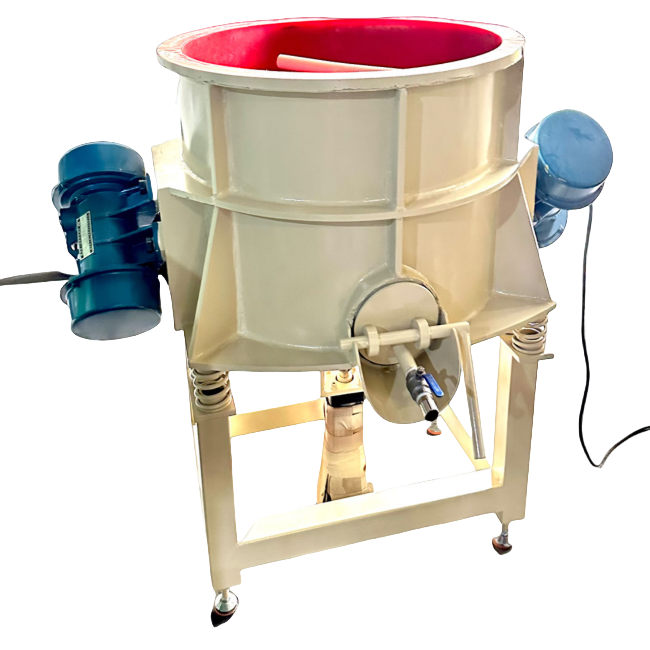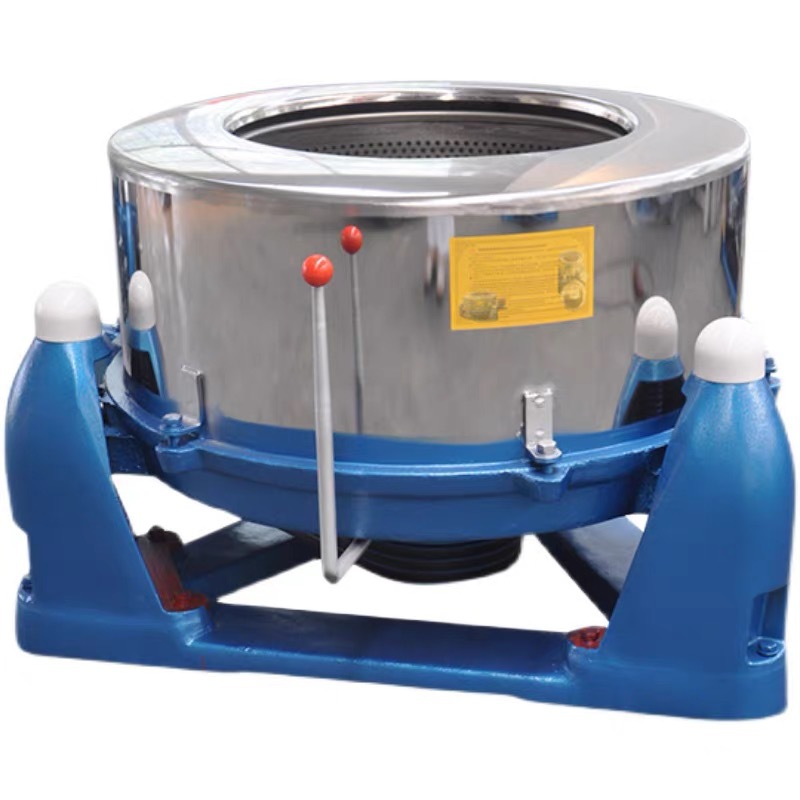Vibratory finishing machines play a crucial role in modern manufacturing and industrial processes, offering efficient solutions for surface treatment and material finishing. This article delves into the importance of vibratory finishing machines, providing a detailed understanding of their function, benefits, and applications across various industries. The vibratory finishing process is essential in industries ranging from automotive to medical devices, ceramics, and even tableware production. Whether it’s for deburring, polishing, or cleaning, vibratory finishing has established itself as a versatile tool for surface refinement.
Brief Introduction of Vibratory Finishing Machine
A vibratory finishing machine is a specialized tool used to smooth, clean, deburr, or polish parts through a vibrating motion, often combined with media like ceramics or plastics. This machine is particularly effective in treating materials like metals, plastics, and ceramics, allowing for precise surface modifications and enhancing product quality. The following sections will explore its mechanics, benefits, and the wide range of customizable options available for different industries.

How Does a Vibratory Finishing Machine Work?
A vibratory finishing machine operates by creating a vibrating action that moves parts, typically immersed in a mix of abrasive media, around a bowl or chamber. The machine's vibration causes friction between the parts and the media, which results in a finishing process. The friction can perform various functions like deburring, descaling, or polishing, depending on the type of abrasive material used and the machine settings.
The machine can be customized to accommodate different materials such as metals, plastics, and ceramics, and the type of media used is tailored to the specific finishing task. This versatility makes vibratory finishing machines essential in numerous industries, especially where a smooth finish is crucial for product functionality, like in medical devices or automotive parts.
The process is efficient, often requiring minimal human intervention, and it can handle both small and large batches of parts. This makes vibratory finishing highly suitable for both mass production and precision work, depending on the industry’s requirements. Machines are available in various sizes and can be fully automated, further increasing their efficiency.
Types of Vibratory Finishing Machines
There are different types of vibratory finishing machines, each designed for specific industrial needs. Some common types include:
Trough Finishing Machines: Ideal for larger or longer parts, offering a continuous operation process.
Rotary Vibratory Machines: Best suited for small to medium-sized parts, offering flexibility and efficient finishing.
Batch Finishing Machines: Used for parts that require specific attention to detail, allowing for more controlled processing.
These types help industries select the machine that matches their specific finishing requirements, adding to the versatility of vibratory finishing.

Benefits of Vibratory Finishing
One of the major benefits of vibratory finishing is its ability to handle complex and delicate components without damaging them. Unlike other methods of finishing, such as manual deburring or abrasive blasting, vibratory finishing ensures that even intricate parts maintain their integrity while achieving a high-quality surface finish. This makes it the preferred method for industries that demand precision, such as medical device manufacturing.
Another advantage is the machine's versatility. Whether the goal is to deburr, clean, polish, or descale, the vibratory finishing machine can adapt to various finishing needs simply by changing the type of media and adjusting the machine settings. This adaptability makes it an ideal solution for industries working with different materials, such as metals, ceramics, and plastics.
Vibratory finishing is also highly cost-effective. The ability to process large quantities of parts simultaneously, while requiring minimal human intervention, significantly reduces labor costs and time. This automated process ensures uniformity across all parts, reducing the chances of defects and, subsequently, the need for rework. Additionally, the machines have long service lives and require little maintenance, making them a long-term investment for manufacturers.
Applications in Different Industries
The vibratory finishing industrial process is used in a broad range of industries. In metalworking, vibratory finishing machines are used to deburr and polish parts, ensuring they meet specific design tolerances and have a flawless surface finish. This is especially important for parts that need to fit or move smoothly together, such as those found in the automotive or aerospace sectors.
In the ceramics industry, these machines are used to smooth and clean ceramic parts before further processing or glazing. This is also essential in the production of tableware, where a polished finish is not only aesthetically pleasing but also crucial for functionality.
Plastic parts also benefit from vibratory finishing, particularly in industries such as electronics and consumer goods, where a smooth finish can improve the durability and appearance of the final product.
For medical devices, surface smoothness and cleanliness are paramount. Vibratory finishing ensures that medical components are free from any burrs or sharp edges that could cause harm to patients. This method also helps in meeting the stringent regulatory requirements of the medical industry.
Customization Options for Vibratory Finishing Equipment
Another significant aspect of vibratory finishing machines is the wide range of customization options available. Manufacturers can choose from different types of media, such as ceramic, plastic, or steel, depending on the material they are working with and the desired finish. The machines themselves can be customized in terms of size, capacity, and automation levels, allowing companies to find the perfect solution for their specific needs.
Customization is particularly important in industries with highly specialized requirements, such as the medical or aerospace sectors, where even minor imperfections can lead to product failure. Custom vibratory finishing solutions ensure that manufacturers can achieve the precise finish they need without compromising on quality or efficiency.

Environmental Impact and Sustainability
In today’s manufacturing landscape, sustainability is an essential consideration. Vibratory finishing machines can contribute to more eco-friendly production processes. Many modern machines are designed to recycle the abrasive media, reducing waste and lowering the environmental impact of the finishing process. Additionally, the machines consume relatively low amounts of energy compared to other finishing techniques, making them a more sustainable option for large-scale operations.
The ability to reuse media is particularly important in industries that aim to reduce their carbon footprint. This process not only conserves resources but also lowers operational costs, making vibratory finishing machines both an economical and environmentally conscious choice.
FAQs
1. What materials can be finished using a vibratory finishing machine?
Vibratory finishing machines can handle materials like metals, plastics, ceramics, and more.
2. How is vibratory finishing different from other surface finishing methods?
Vibratory finishing uses abrasive media and vibrations to achieve smooth surfaces, whereas other methods like abrasive blasting use air pressure or manual labor.
3. Can vibratory finishing machines be customized for specific applications?
Yes, they offer a wide range of customization options, including different types of media, machine sizes, and automation levels to suit specific industrial needs.




















